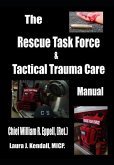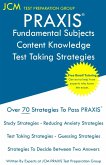Tactics and Strategies for Aircraft Firefighting is a specialized manual for Aircraft Rescue and Firefighters (ARFF), built on over 26 years of operational experience and aligned with international standards from NFPA, ICAO, and FAA. The book provides a structured approach to aviation emergencies using the APIET process: Analysis, Planning, Implementation, Evaluation, and Termination, ensuring operational readiness and effectiveness. Analysis (A): Understanding Airport Infrastructure and Risks The first step in APIET focuses on analyzing airport layouts and identifying potential hazards. * Chapter 1: Airport Analysis explores rapid and critical access areas, fire resistance of structures, perimeter roads, and challenging terrains like jungles, deserts, and water bodies. It also emphasizes understanding water intake points, fuel storage, hazardous materials, and familiarization with aircraft models to optimize response routes and minimize delays. Planning (P): Developing Effective Emergency Plans Planning is the foundation for crafting tailored responses to emergencies. * Chapter 2: Response Planning introduces the Incident Command System (ICS) and details the creation of Incident Action Plans (IAPs). It covers resource coordination, personnel assignments, and drills, following guidelines like NFPA 424, to ensure all elements of the response are pre-coordinated and rehearsed for maximum efficiency. Implementation (I): Executing the Action Plan This phase is about carrying out the response plan to stabilize and resolve emergencies effectively. * Chapter 3: Implementing the Action Plan outlines tactical priorities, including passenger rescue, fire suppression, and incident stabilization. It provides specific methods for handling fires in engines, cargo compartments, and cabins, while emphasizing the strategic use of water and foam reserves and managing aircraft evacuations under high-pressure scenarios. Evaluation (E): Assessing Performance and Adjusting Strategies Ongoing evaluation ensures effectiveness and identifies areas for improvement. * Chapter 4: Evaluating Progress introduces tools like After-Action Reports (AARs) and Key Performance Indicators (KPIs) for assessing real-time operations. Using the Deming Cycle, ARFF teams can refine strategies and continuously improve emergency management processes. Termination (T): Safely Concluding the Incident The final phase ensures safe demobilization and capturing lessons learned for future readiness. * Chapter 5: Ending the Incident focuses on operational closure, final reporting, and post-incident reviews. It provides steps to restore airport functionality, conduct thorough debriefings, and implement improvements based on evaluations. Key Features * Real-World Success Stories: Insights from emergencies involving hazardous materials, fuel spills, and terrain-specific challenges. * Regulatory Alignment: Comprehensive application of NFPA, ICAO, and FAA standards. * Practical Tools and Techniques: Charts, scenarios, and structured methods to enhance operational effectiveness. * Focus on APIET: A systematic approach covering every phase of emergency response. Tactics and Strategies for Aircraft Firefighting is an essential resource for ARFF professionals dedicated to protecting lives and aviation infrastructure. With its structured guidance, practical tools, and real-world applications, this book equips ARFF teams with the expertise to handle emergencies confidently and effectively.
Hinweis: Dieser Artikel kann nur an eine deutsche Lieferadresse ausgeliefert werden.
Hinweis: Dieser Artikel kann nur an eine deutsche Lieferadresse ausgeliefert werden.








